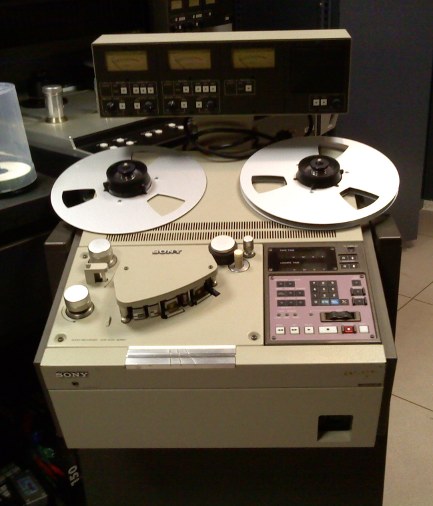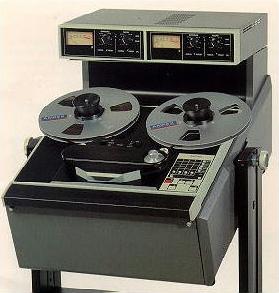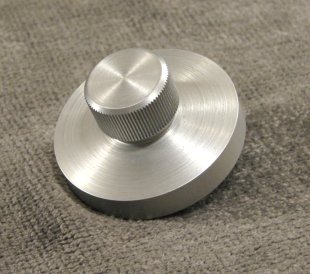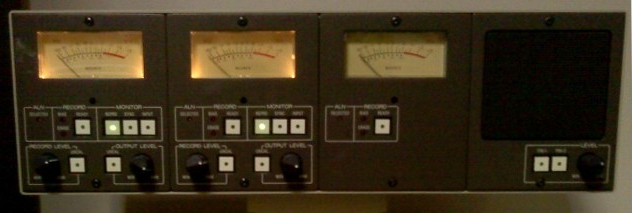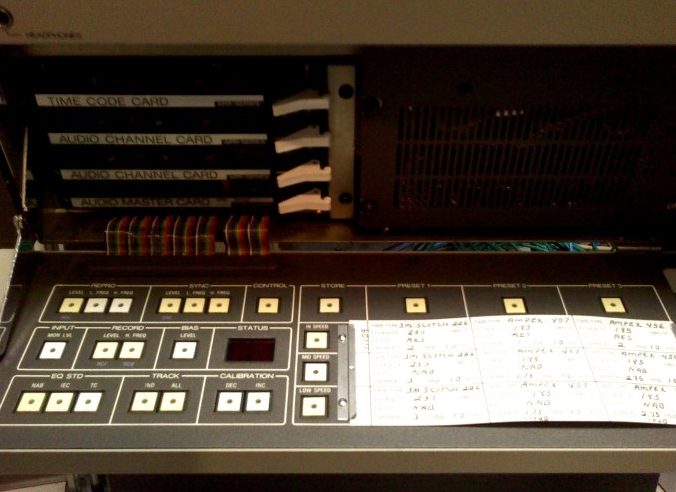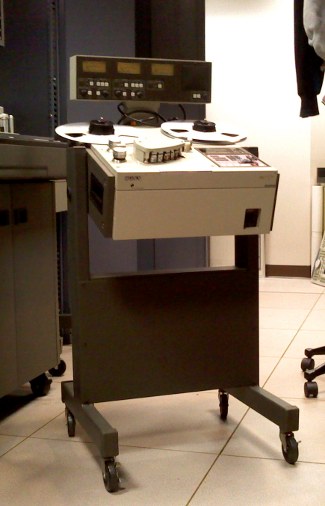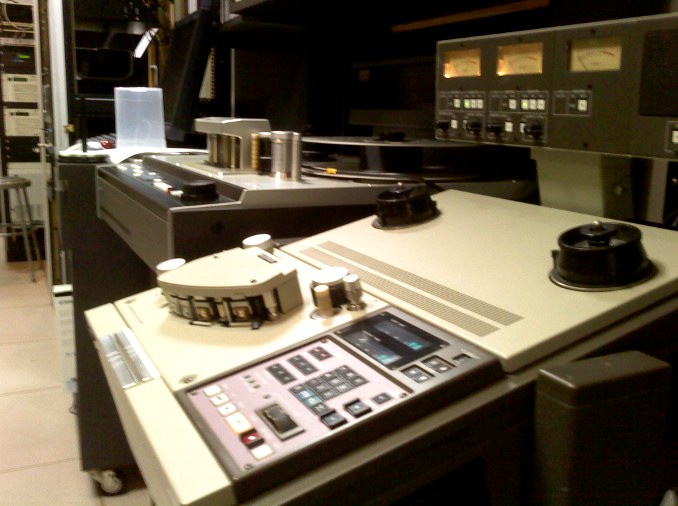
APR5003v in front of APR-24

Let me introduce you to my old friend: Umm... Pictured above is a Sony APR5003v 1/4" two-track professional analog tape recorder. It represents about the penultimate stage of analog two-track tape recorder evolution. In 1982, Sony bought out Jeep Harned's MCI Professional Audio Corporation and began marketing and developing his highly successful line of equipment. In 1989, the Sony APR5003v was the ultimate result of his analog tape development. Besides the usual two tracks of audio, the APR5003v records and plays back a phantom center stripe of SMPTE time code. It generates that timecode, can jam-synch its TC generator to match and reproduce incoming code, and can independently synch itself to any other machine's timecode without help of an external synchronizer. That's pretty sophisticated for the time period in which it was built. Looking at the audio side of the machine, the setup and bias facilities are equally impressive: The unit's setup is controlled by a microprocessor, allowing easy tweaking and storage of three setups. There are many uses for this: It is possible to store a setup for each brand of tape you use or mutiple setups for one brand of tape with different bias and EQ settings to produce different sounds. My typical setup with one of these was one setting each for a medium-level tape, a medium-bias, high-level tape, and a high-bias, high-level tape. That would be Ampex 407, Scotch 250, and Ampex 456. This capability was also simply marvelous in professional operations because various bias and EQ settings could be A/B'd very quickly.
